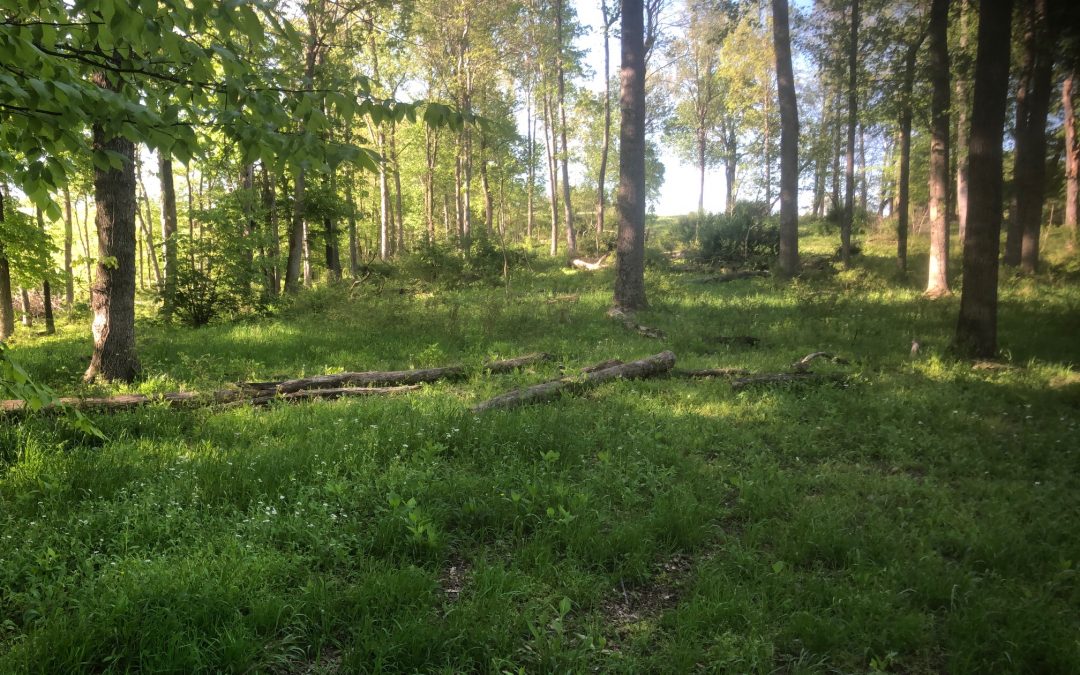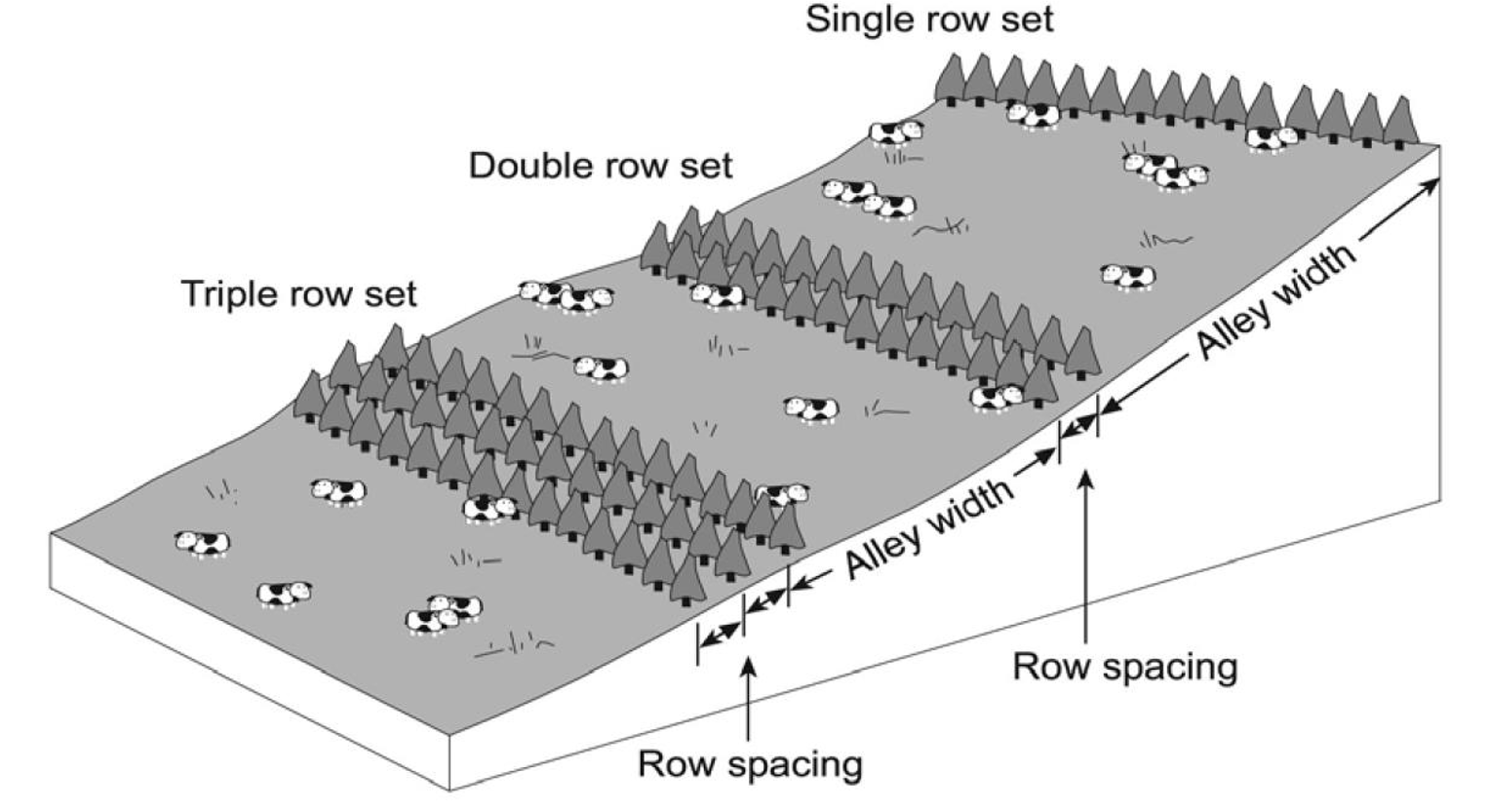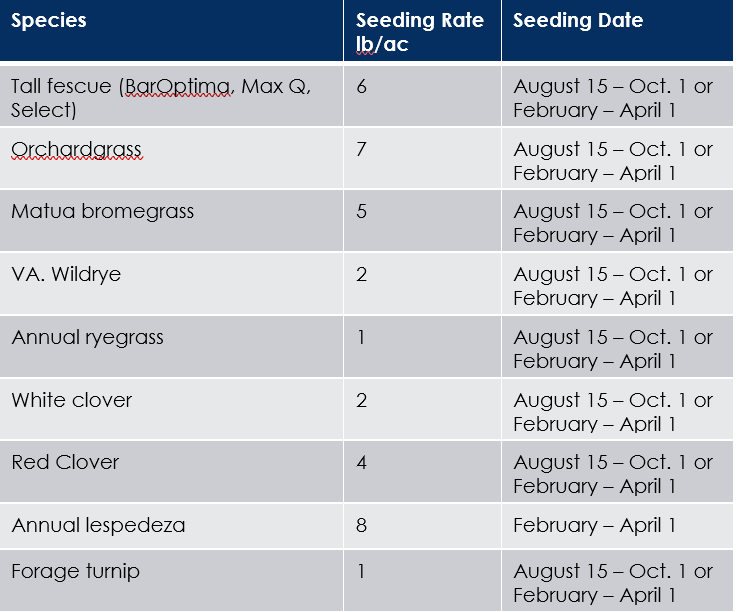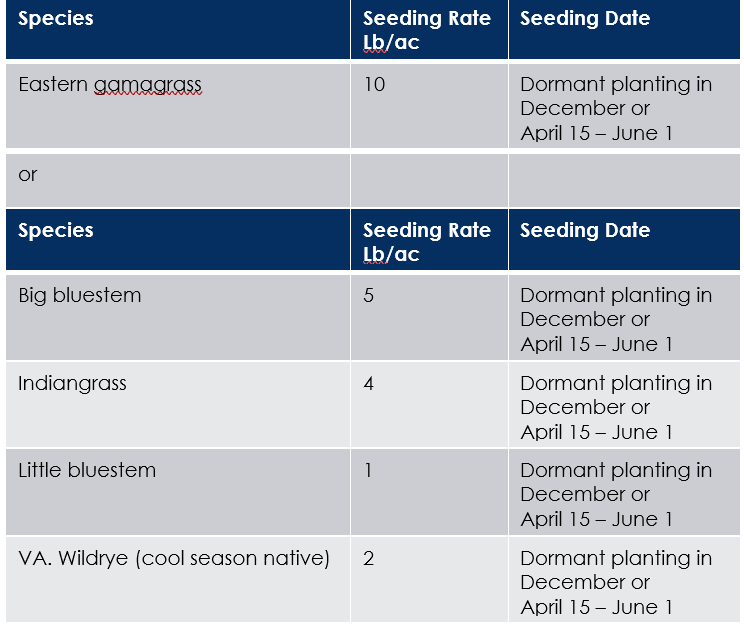
Silvopasture

Pasture to Silvopasture
Silvopasture Plan
Goal: Managing timber and grass to the advantage of both.
Light Management and Tree Planting:
Harvest salable timber or perform hack and squirt technique to remove low grade trees providing light for regeneration of trees and to grow grass. Work with forester on designated trees to remove. NRCS can currently not recommend removal of trees by other methods due to potential impacts on bat habitat. The minimum light needed to grow cool season grass is 50% light to the ground with a minimum opening of 0.10 ac (66’x66’). To grow warm season grass a minimum of 60% light (70’ x 70’) is needed to the ground. The layout of trees can be scattered or in rows or a combination of the two. Minimum trees per acre is 27 trees/ac (average spacing of 40’x40’) and the maximum to grow grass is 304 trees/ac (average spacing of 8’x 18’). Thinning may be required in the future to improve tree growth and maintain productive grass.
Shade for Livestock:
If shade is needed for livestock planting trees on the south and or west side of a paddock is desired, south fence line is best. Unless it is a wide band of trees that will provide 63 square feet of shade or more per cow calf with access through the shade a line of trees will be needed on every fence line. Another option is a cluster of trees planted or left so livestock have access to shade from multiple paddocks. In this case ideally there would be a cluster of shade trees accessible from all paddocks. The minimum size of this planting is 630 square foot per cow calf with the shade area used fifty percent or less of the time.
Livestock exclusion:
If trees are less than 15’ tall they will need to be protected from livestock for horned cattle it will likely be longer. The typical browse height is 5 to 6’ so we want to protect the trees from browsing to 6’ or higher. Set stocked livestock are more likely to rub on the trees and remove the bark girdling and killing them. Livestock exclusion can be: a fence that restrains livestock away from the terminal bud and trunk, factors are height of the fence and distance from the tree (i.e. 42” electric fence and 24” inset of tree), a cage 18” diameter 6’ tall, 6’ diameter 5’ high or tubex or vexar 6’ tall secured with multiple post to prevent damage from livestock. Be observant watching for any potential damage to trees. When trees are young they are particularly prone to browsing and being rubbed on. Protection of the terminal bud is the main concern. In wet conditions do not allow livestock to graze timber areas where soils are prone to compaction (e.g. Godwin soil type). Be aware of the danger of windfall to humans and livestock where trees have been killed by hack and squirt particularly in windy conditions. Also be sure grazing restrictions are adhered to according to herbicide label or UT guidelines.
Grazing Management:
Practice rotational grazing for cool season forages allow forages to reach a minimum of 8” prior to grazing and graze down to 4” or taller. Allowing forages to reach the boot to early head stage is ideal for soil health and achieving the best balance of biomass for and forage quality. Livestock should not be allowed to denude land under trees, strive to maintain soil cover of both residual plants and dead residue. Rotation will be based on grass height, cover and impacts on trees and all vegetation however an approximate rotation will be 4 days or less on a paddock and a recovery time of 28 days or more. A recovery time of 45 days or more will be strived for. In the winter time a recovery time between grazing may be as long as 210 days.
Native warm season grasses (NWSG) will be 18” tall prior to grazing and not grazed lower than 8”. Manage for 12” height or taller prior to the first frost or November 1 whichever occurs first. After frost they can be grazed, it may improve production of NWSG to graze them low in March prior to green up. A managed prescribed fire can also improve production of NWSG, contact TWRA or TDF before burning. If vigor of native grasses is slower than expected allow them a longer regrowth period prior to grazing remove no more than half of the height when you do graze them.
A graze plan (forage animal balance spreadsheet) will accompany this document.
Seeding Mixtures for silvopasture areas
Cool Season grass mix:

Native Warm Season grass mix:

Facilities:
Locate mineral, supplementary feed and hay 30’ or further away from desirable trees. Water for livestock will be placed high on the landscape and strategically located so the paddock can be further subdivided. Strive for a travel distance for livestock to water being 800’ or less. The pipeline can be burst proof high density poly pipe on top of the ground or buried 18” underground permanent water tanks can be installed but you are encouraged to use quick couplers with portable troughs. In general water is needed in every other fence line.
Summary:
Be observant and manage livestock to enhance the growth of trees and forage. If trees are showing signs of decline reduce livestock access to the trees. Manage to keep adequate light to the ground to grow forage and respect minimum grazing heights.